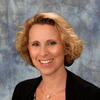
We all want inclusion, diversity, equity, and acceptance (IDEA) in our workplaces. Corporations are creating and hiring diversity and inclusion positions to help address issues related to racial, ethnic, and gender diversity and inclusion.
In 2018, California passed legislation requiring that boards of directors have at least one woman on them and at least two no later than December 31, 2021. On August 31, the state legislature passed a bill requiring boards to have at least one board member from an underrepresented community (Black, Hispanic, Latino, Asian, Pacific Islander, Native American, Native Hawaiian, or Alaska Native) by that same deadline and two no later than December 31, 2022. It is now awaiting the governor’s signature.
But legislating diversity is not enough; we need to move toward inclusion. Inclusion is not just being represented on a board or in a workplace. According to the Society for Human Resource Management (SHRM), inclusion refers to the efforts you use to embrace the differences. It is mindset that starts at the top and actively works toward every employee feeling “welcomed, respected, supported, and valued.” If you look around and you have a visibly diverse workforce, congratulations. However, you might still have one that is not inclusive. To know if your workplace culture is inclusive, you really need to ask employees if they feel their contributions are valued and respected equally. You might be surprised with the answers.
Beyond racial, ethnic, and gender diversity, another area where IDEA is lagging is neurodiversity. What is neurodiversity? This is the idea that people of all neurological processing types are included and accepted in the workplace culture. The idea of neurodiversity started with the Autism movement to get away from the medical model of “broken” and needing to be fixed or medicated. Instead, it embraces the differences and strengths that these neurodivergent individuals (ND) have from their neurotypical (NT) counterparts. This concept has broadened to include attention deficit hyperactivity disorder (ADHD), learning processing disorders, bipolar, and Tourette’s. It is often thought of as the invisible disability because to the average person, NDs look like everyone else. However, the world looks very different in the eyes of an ND.
How does this affect workplace diversity if you cannot see the differences? NDs make up approximately 10 percent of the population. As of February 2020, the U.S. labor force was 164.6 million, which means approximately 16.5 million individuals are ND. Many of these have higher-than-average skills and abilities, such as pattern recognition, memory, or advanced math skills. Unfortunately, many do not fit the prospective job applicant profile. They may struggle with interviewing or maintaining eye contact, have erratic work histories, or have difficulty filling out job applications. If they are hired, they are more likely to be underemployed and working well below their education or abilities.
Companies that specifically seek out ND applicants, such as SAP, Hewlett Packard Enterprise, Microsoft, Dell, Deloitte, and Google, have established special programs to help support them to improve their success as employees. ND employees often need accommodations such support services (buddy programs), physical environment changes (quiet rooms), flexible working arrangements (evening shifts or working from home), and technology. So, with these types of support needs, why would a company seek out NDs knowing they will come with “baggage”?
The benefits of hiring and working with ND employees far outweighs the cost and effort. For example, those on the Autism spectrum often excel at pattern recognition and memory retention. They can become fantastic developers and programmers, which is why SAP, HPE, Microsoft, Dell, and Google have sought them out. Their natural skills also enable them to tolerate the monotonous tasks, such as those found in accounting and auditing. These fledgling programs have primarily focused on Autism spectrum individuals, but these programs can be expanded to include all types of neurodiverse individuals.
Those with ADHD can be incredibly imaginative, see the “big picture,” are high energy, enjoy change and chaos, and are risk-takers. These natural tendencies make for successful entrepreneurs, inventors, and CEOs, such as Bill Gates, Sir Richard Branson, David Neeleman, Paul Orfalea, Alan Meckler, and James Carville. Employees who have learning processing disorders (LPDs), such as dyslexia and dyscalculia, had to work hard in school because their brains are wired differently from NTs. In fact, they typically develop unique ways of acquiring knowledge and solving problems. Many may not have been successful in college, but that did not stop them from being successful in business. Such NDs include Steve Jobs, Charles Schwab, Bill Hewlett, Jacques Dubochet (Nobel physicist), and Carol Greider (Nobel molecular biologist).
So, the next time you are preparing for a recruitment, focus on the knowledge, skills, and abilities (KSAs) that you need and not the package they come in. Go out of your way to look for someone who does not fit the mold and may have acquired those KSAs in an unusual or circuitous path. You just might be surprised at how looking for a square peg to fit the round hole might solve more than just your vacant position. Neurodiversity can be one more tool to achieving a truly inclusive, diverse, equitable, and accepting workplace.

New, Reduced Membership Dues
A new, reduced dues rate is available for CAOs/ACAOs, along with additional discounts for those in smaller communities, has been implemented. Learn more and be sure to join or renew today!
